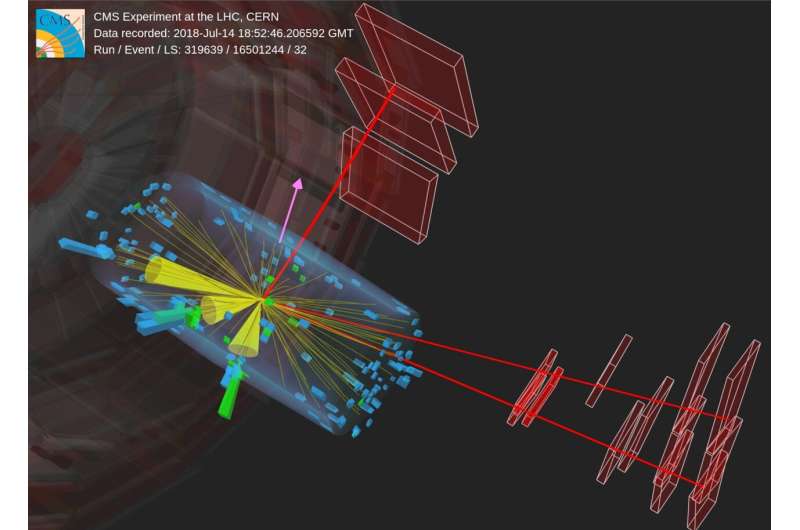
The CMS collaboration at CERN has made a groundbreaking discovery by observing the production of a single top quark alongside a W and Z boson for the first time. This extraordinary event, known as tWZ production, occurs only once in every trillion proton-proton collisions at the Large Hadron Collider (LHC). Such a rare process offers new insights into fundamental forces in nature and the interactions between particles.
Understanding the complexities of tWZ production is crucial for physicists. The top quark, being the heaviest fundamental particle, has a strong interaction with the Higgs field. This unique property makes the study of tWZ production vital for exploring the Higgs mechanism and could potentially unveil signs of new physics beyond the established Standard Model.
Challenges in Detection and Analysis
Observing tWZ production presents significant challenges. The rarity of the event and its similarity to the more common ttZ production, which involves a top and an anti-top quark with a Z boson, complicate the analysis. The ttZ process occurs approximately seven times more frequently, leading to substantial background noise that researchers must sift through.
Alberto Belvedere, a researcher with the CMS collaboration at DESY, explained, “Because of its rarity and its similarity with the ttZ process, observing tWZ production requires advanced analysis techniques involving state-of-the-art machine learning.” The collaboration employed a sophisticated machine learning algorithm to distinguish the tWZ signal from the overwhelming background data.
The findings from this research are currently available on the arXiv preprint server. Notably, the rate of tWZ production observed was slightly higher than theoretical predictions. This discrepancy raises the possibility of unknown interactions or particles influencing the results. Roman Kogler, another researcher with the CMS collaboration, pointed out that if these deviations persist, they could indicate new physics, especially with increasing energies of the outgoing particles.
Implications for Future Research
The CMS collaboration’s observation marks a significant achievement in high-energy physics. It underscores the LHC’s capability to probe some of nature’s most elusive phenomena. The implications of this discovery extend beyond mere observation; it opens avenues for deeper understanding of the electroweak force and its components, the W and Z bosons.
As researchers continue to analyze future data, they will seek to determine whether the observed rate of tWZ production reflects a statistical anomaly or hints at groundbreaking discoveries in fundamental physics. The collaboration’s efforts contribute not only to the field of particle physics but also to our broader understanding of the universe.
This discovery serves as a reminder of the ongoing quest to uncover the underlying principles governing the cosmos. The CMS collaboration’s ability to detect such rare events emphasizes the importance of advanced analytical techniques and the innovative spirit of scientific inquiry at institutions like CERN.







